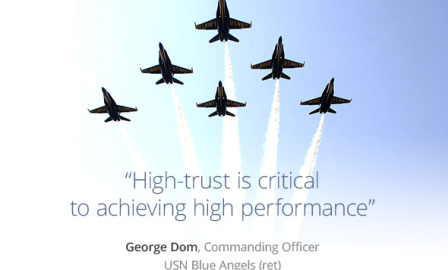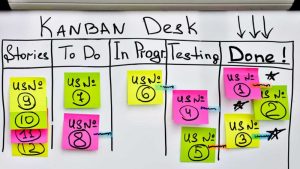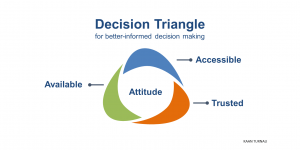Trust is an essential component of the customer relationship. If you think about some of the most notable business models that have sprung up over the last 5-10 years, you’ll find that the most successful companies are in the business of cultivating trust:
- Uber – The rider has to trust that the driver is safe, and the driver has to trust that the rider will treat them and their car with respect
- AirBNB – The owner needs to trust strangers to treat his or her property with respect, and the guest needs to trust that they will have a clean, safe place to stay
- Amazon – Buyers needs to trust that whatever they order will arrive in good shape, within the proper window of time.
Ironically, even in this era of the “sharing economy,” trust is not always present within the dynamics of the workplace. Consulting firm EY recently did a study of 9,800 professionals, aged 19 to 68, in eight industrialized nations (including the United States). The results indicated that:
- 46% of respondents claimed to have a “high” level of trust in their employer
- 15% said “little to no trust at all”
- 39% said “some trust” and it can fluctuate both ways
Within the 15% who reported “little to no trust at all, the top five trust issues reported were:
- Compensation is not fair
- There are not equal opportunities for pay and promotion
- A lack of strong senior leadership
- Too much employee turnover
- Not enough collaboration
Trust is an ephemeral concept that can be difficult to measure and define within an organization. And yet, for any workplace to thrive, trust needs to be developed at many levels: colleague-to-colleague, manager-to-employee, senior leadership to lowest-level workers, and more. This is best achieved through effective communication and transparency around what’s going on at different levels of the business.
To help drill further into the concept of trust, I turned to George Dom, former Commanding Officer of the Blue Angels, Top Gun Instructor, and business consultant to Fortune 500 corporations. Here’s George’s response:
“For naval aviators, flying off aircraft carriers a thousand miles from land (often in the middle of the night) trust is essential not just success, but survival. There can be no compromise in that extreme laboratory of high performance. If you weren’t trusted, you’d fail or be fired; if you can’t trust others, you’ll either fail or look for another line of work. In the knowledge-based economy, high performance is all about relationships, strong and enduring relationships with all stakeholders. The fundamental ingredient for every successful relationship is trust.”

Trust is such a basic element of every relationship. No organization can be successful as a whole if trust does not exist between the people who comprise it. But if trust is not already present, how can an organization develop it quickly, in order to accelerate its achievements? In today’s volatile business climate, where rapid change is a constant and decision-making is becoming complex, there isn’t always enough time to communicate with everyone through the right channels. People often hear big news about their organizations second, or third-hand, which cuts into trust and can create an environment of fear. Within a culture of trust, there is an upward spiral of achievement based on creativity, determination, accountability, excellence, passion, camaraderie, humor, candor, and resilience. Allowing a culture of mist
rust (due to fear, incompetence, and/or integrity gaps) will result in the opposite.
Flying fighter jets in training and combat in the unforgiving environment of an aircraft carrier at sea — as well as high-speed and very low altitude formation acrobatics — was a unique thrill and privilege for George Dom. But his greatest lasting satisfaction has come from helping to build high-trust performance leaders and teams. George believes that through daily, deliberate, intentional effort, a culture of high-trust and fully engaged wingmen can be developed at all levels.

George Dom, Commanding Officer USN Blue Angels (ret)
To hear more about how to develop trust within your organization, we hope you’ll join us on October 14 for Waggl’s webinar with George Dom, “Blue Angels Leadership and Teamwork: The Power of TRUST.” In this webinar, George will explain why trust is the cornerstone to be an effective leader, and why it’s the glue that keeps teams firing on all cylinders. Space is limited – RSVP today!
Business & Finance Articles on Business 2 Community(76)






